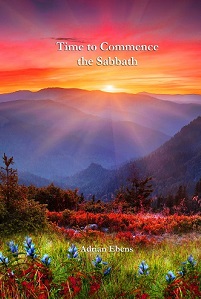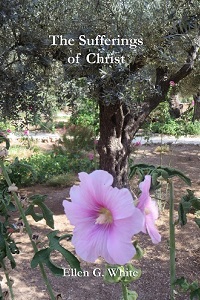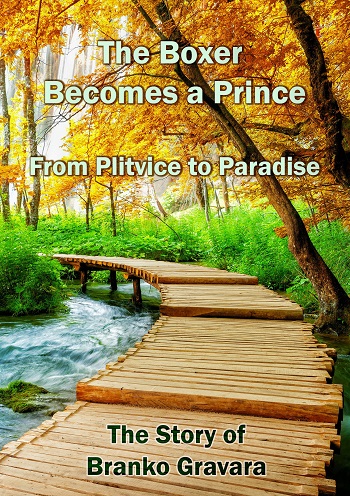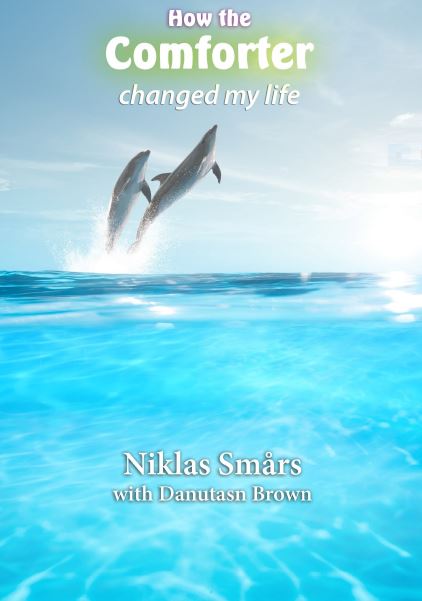Cosmic Sanctuary Week
An interesting example of the seven day week motif is seen in a parallel found in the last chapter of Exodus where Moses recounts how the sanctuary was organized. The same sequence in the same order is also listed in chapter 35:11-16. But here in Exodus 40, like the “evening and the morning” formula used in Genesis 1, each item ends with a standard phrase: “as the Lord commanded Moses.” Notice each particular component of the sanctuary as they are listed. There are seven in all.
1 Verse 19 “He spread abroad…the covering of the tent above upon it.”
“as the Lord commanded Moses.”
2 Verse 21 “and set up the veil of the covering and covered the ark.”
“as the Lord commanded Moses.”
3 Verse 23 “He set the bread in order upon it before the Lord.”
“as the Lord commanded Moses.”
4 Verse 25 “He lighted the lamps before the Lord.”
“as the Lord commanded Moses.”
5 Verse 27 “He put the golden altar…and he burnt sweet incense”
“as the Lord commanded Moses.”
6 Verse 29 “ He put the altar of burnt offering by the door”
“as the Lord commanded Moses.”
7 Verse 30 “He set the laver…and put water there to wash withal.”
“as the Lord commanded Moses.”
Now notice how the concepts associated with these seven symbols are directly parallel to and correspond with the seven days of creation:
| 1 LIGHT 2 WATER-AIR 3 LAND 4 LIGHT 5 WATER-AIR 6 LAND 7 SABBATH |
“divided light from the darkness” “divided waters under from above” “earth brings forth seed and fruit” “Let there be lights in the firmament” “fly above the earth in the open air” “cattle, creeping thing, and beast” “washed, purified, cleansed |
covering veil bread lamps incense sacrifices laver |
This is a broad picture of the cosmic sanctuary. The vastness of space is its covering “above upon it” as “darkness was upon the face of the deep. And the Spirit of God moved upon the face of the waters” (Genesis 1:2). The veil between the holy and most holy places is represented by the division of the two firmaments (1:6). The dry land brings forth vegetation and grain from which bread is prepared. “Bread comes out of the earth” (Job 28:5). The sun, moon and stars become the lampstand. Birds fly in the sky as living incense ascends to heaven. Land animals serve as sacrifices for the altar.
When we come to the Sabbath, the emphasis in this part of the parallel sanctuary comparison is on sanctification and holiness. Paul, speaking of the Church, said that Christ so loved it, He “gave himself for it: that he might sanctify and cleanse it with the washing of water by the word.” (Ephesians 5:25, 26). On the Sabbath, God wants to wash away the dirt of our labor, to cleanse our tired bodies, and purify our weary hearts., “that he might present it to himself a glorious church, not having spot, or wrinkle, or any such thing; but that it should be holy and without blemish.” (Verse 27).
The seventh day also is linked to cleansing in the purification ceremony of the Red Heifer sacrifice. If anyone should ever touch a dead body, a bone or a grave they were declared “unclean for seven days.” Numbers 19:16. But there was a remedy. The ashes of the red heifer could be mixed with water and sprinkled on them with hyssop on the third and seventh days. “And on the seventh day he shall purify himself, and wash his clothes, and bathe himself in water, and shall be clean at even.” Num 19:19. Failure to do this would bring the severe consequences of being “cut off from among the congregation, because he has defiled the sanctuary of the Lord: the water of purification has not been sprinkled upon him; he is unclean.”
Water of separation, water of purification, sanctifying water. This is the Sabbath water of the laver, cleaning us from sin and death.
The apostle John, in his visionary journey through the heavenly sanctuary, began in the holy place where he saw Christ walking among the candlesticks. His next stop, in chapter 4, was in a vast area before the throne of God.
“A throne was set in heaven… and there were seven lamps of fire burning before the throne… and before the throne there was a sea of glass like unto crystal.” Revelation 4:2,5,6.
This passage give us a glimpse of how immense the heavenly sanctuary really is compared to the earthly model. Instead of the brass basin fashioned by Moses or even the multiple lavers provided by Solomon, here the heavenly laver is a sea! Its mention indicates that John is now in a Sabbath environment. Notice the themes of holiness, time and creation in the surrounding verses.
“And the four beasts…rest not day and night, saying, Holy, holy, holy, Lord God Almighty, which was, and is, and is to come.” Rev. 4:8
Rather than a triple "Holy" for three persons, the immediate context is that of time: past, present, and future. Just as the seven horns and seven eyes of the Lamb in Rev 5:6 represent the omnipotence and omniscience of Christ's omnipresent Spirit, the three holies express God's eternal holiness, a reference to God’s timelessness, and time is a prime aspect of Sabbath holiness.
Then the Sabbath focus turns to worship and the Creator.
“The 24 elders fall down before him that sat on the throne, and worship him that liveth for ever and ever, and cast their crowns before the throne, saying, Thou art worthy, O Lord, to receive glory and honor and power: for thou hast created all things, and for thy pleasure they are and were created.” Revelation 4:10, 11. "O come, let us worship and bow down: let us kneel before the LORD our Maker!" Psalm 95:6.





